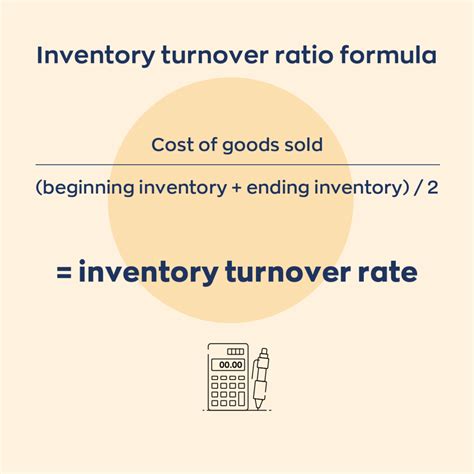How to Calculate Inventory Turnover: A Comprehensive Guide
Inventory turnover is a crucial financial metric that reveals how efficiently a business manages its inventory. A high turnover rate generally indicates strong sales and efficient inventory management, while a low rate might signal overstocking, obsolete goods, or weak sales. Understanding how to calculate and interpret inventory turnover is essential for any business owner or financial analyst. This guide will walk you through the process, explaining the different methods and offering insights into how to improve your turnover rate.
Understanding Inventory Turnover
Before diving into the calculations, let's clarify what inventory turnover represents. It measures the number of times a company sells and replaces its inventory within a specific period, usually a year. A higher turnover rate suggests that your products are selling quickly, minimizing storage costs and reducing the risk of obsolescence. Conversely, a low turnover rate can lead to increased storage costs, potential losses from outdated inventory, and tied-up capital that could be used elsewhere in the business.
Methods for Calculating Inventory Turnover
There are two primary methods for calculating inventory turnover: the Cost of Goods Sold (COGS) method and the Sales method. Both offer valuable insights, but the COGS method is generally preferred for its accuracy.
1. Cost of Goods Sold (COGS) Method
This method uses the cost of goods sold, providing a more accurate reflection of the actual cost of inventory sold. The formula is:
Inventory Turnover = Cost of Goods Sold / Average Inventory
Let's break down each component:
-
Cost of Goods Sold (COGS): This represents the direct costs associated with producing the goods sold. It includes raw materials, direct labor, and manufacturing overhead. You'll find this figure on your income statement.
-
Average Inventory: This is the average value of your inventory over the period. You calculate it by adding the beginning inventory and ending inventory, then dividing by two. The formula is:
Average Inventory = (Beginning Inventory + Ending Inventory) / 2
Example:
Let's say a company has a COGS of $500,000, a beginning inventory of $100,000, and an ending inventory of $150,000.
- Calculate Average Inventory: ($100,000 + $150,000) / 2 = $125,000
- Calculate Inventory Turnover: $500,000 / $125,000 = 4
This means the company sold and replaced its entire inventory four times during the period.
2. Sales Method
The sales method uses sales revenue instead of COGS. While simpler to calculate, it's less precise because it doesn't account for the actual cost of goods. The formula is:
Inventory Turnover = Net Sales / Average Inventory
This method is useful for quick estimations or when detailed COGS information isn't readily available, but the COGS method is generally preferred for more accurate financial analysis.
Interpreting Your Inventory Turnover Ratio
The ideal inventory turnover ratio varies significantly across industries. A high turnover ratio isn't always better; it could indicate insufficient inventory to meet demand. Similarly, a low ratio isn't always bad; it could be due to a deliberate strategy of stocking high-demand items.
Benchmarking: Compare your inventory turnover to industry averages and competitors to get a better understanding of your performance. Industry-specific benchmarks can be found through market research reports and financial databases.
Analyzing Trends: Track your inventory turnover over time to identify trends and potential issues. A declining turnover ratio warrants investigation into potential causes, such as slow-moving inventory, pricing issues, or changes in customer demand.
Improving Your Inventory Turnover
Several strategies can help improve your inventory turnover ratio:
- Accurate Demand Forecasting: Predict demand accurately to avoid overstocking or stockouts.
- Efficient Inventory Management System: Implement a system for tracking inventory levels and identifying slow-moving items.
- Just-in-Time (JIT) Inventory: Minimize storage costs by ordering inventory only when needed.
- Strategic Pricing: Adjust pricing to stimulate sales and reduce excess inventory.
- Regular Inventory Reviews: Periodically review your inventory to identify obsolete or slow-moving items.
By understanding how to calculate and interpret inventory turnover, businesses can gain valuable insights into their operational efficiency and make data-driven decisions to improve profitability. Remember to use the COGS method for the most accurate results and benchmark your performance against industry standards.
